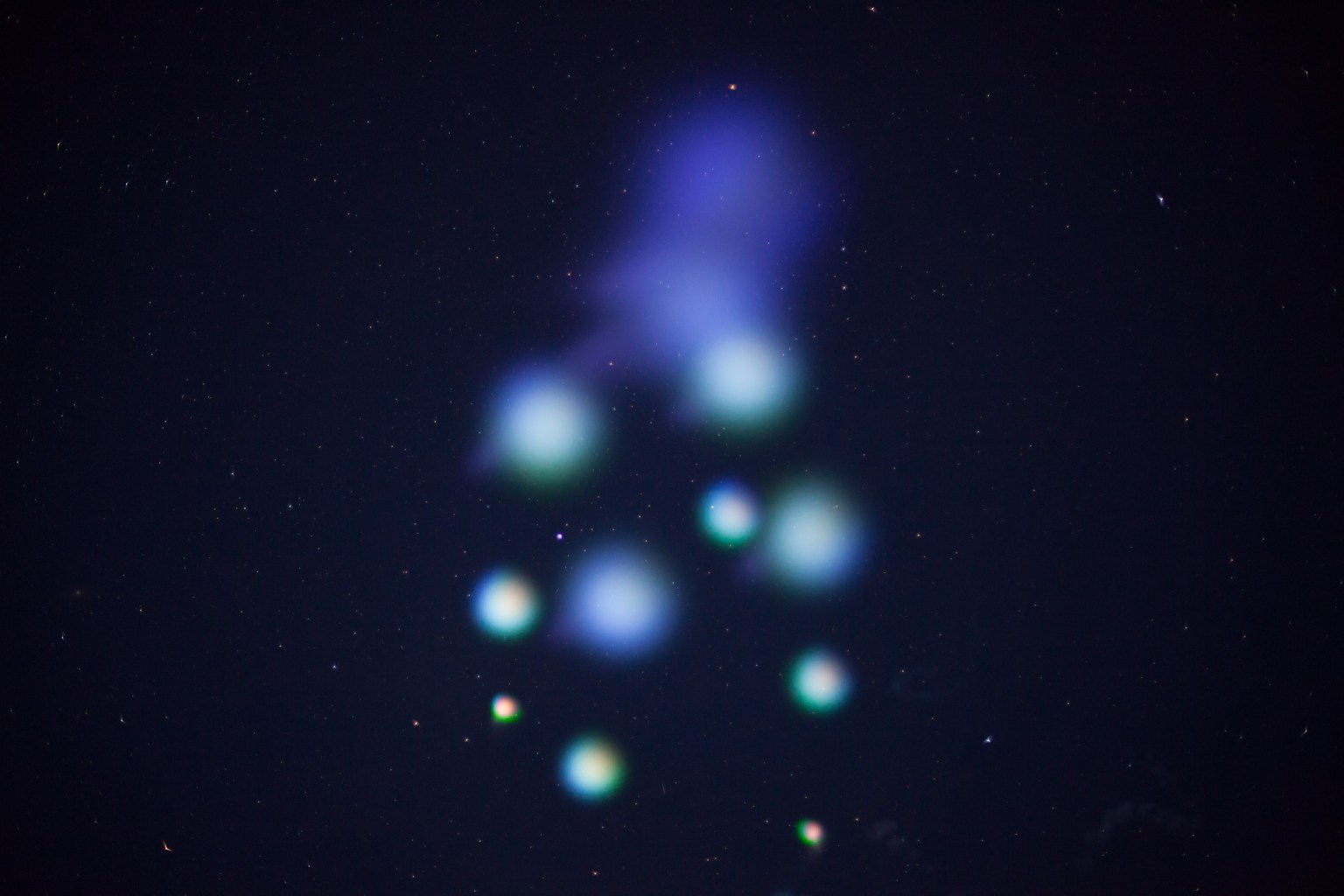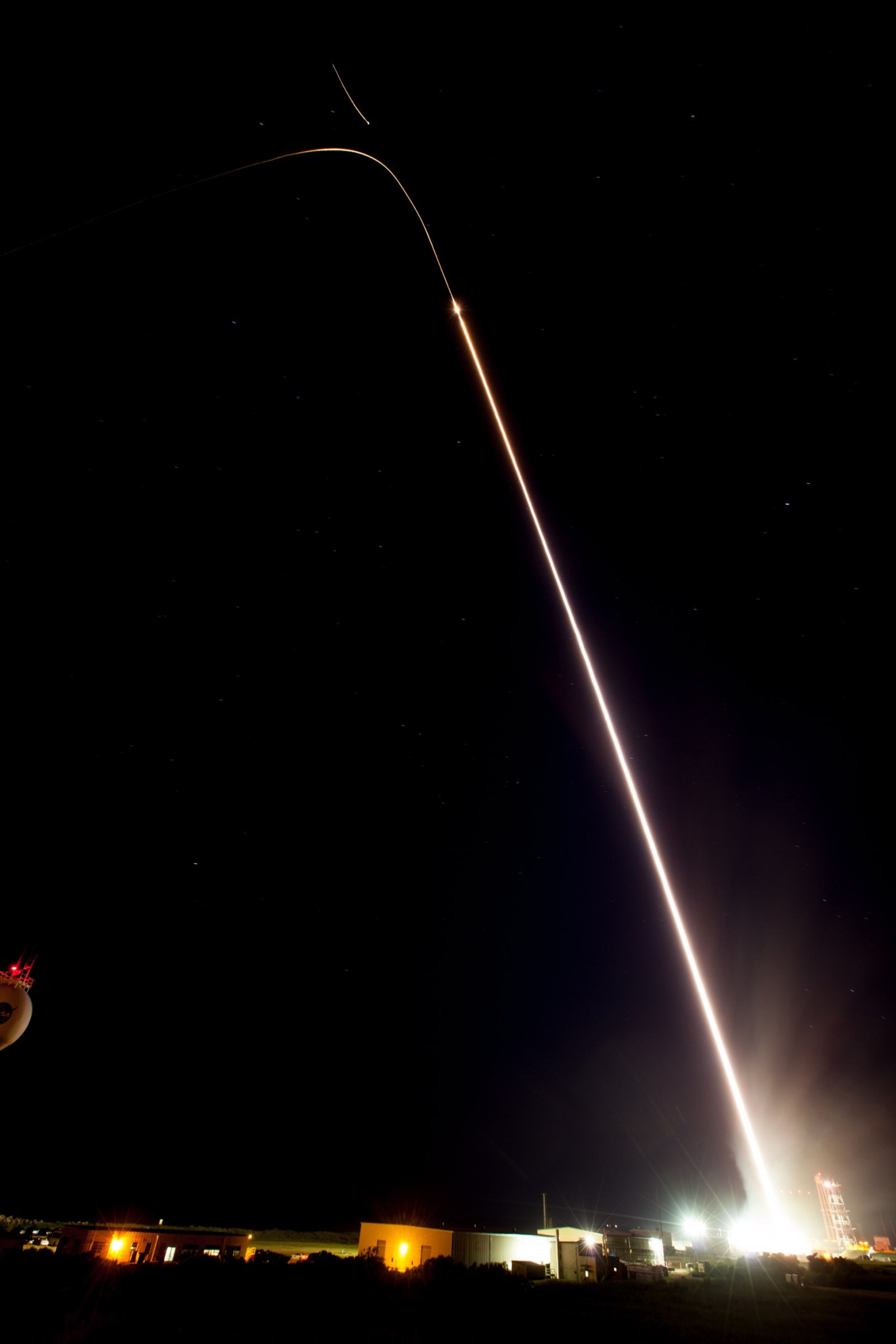July 4 fireworks came early when a NASA Terrier-Improved Malemute sounding rocket was successfully launched at 4:25 a.m., Thursday, June 29, from the agency’s Wallops Flight Facility in Virginia.
During the 8-minute flight, 10 canisters about the size of a soft drink can were ejected in space, 6 to 12 miles away from the 670-pound main payload.
The canisters deployed blue-green and red vapor that formed artificial clouds visible from New York to North Carolina.
During an ionosphere or aurora science mission, these clouds, or vapor tracers, allow scientists on the ground to visually track particle motions in space.
The development of the multi-canister ampoule ejection system will allow scientists to gather information over a much larger area than previously possible when deploying the tracers just from the main payload.
The rocket, after being delayed multiple times over the last 30 days, flew to an altitude of about 118 miles.
Wallops received nearly 2,000 reports and photos of the cloud sightings from areas as far north as New York, south to North Carolina, and inland throughout Virginia, Maryland, Pennsylvania, and points in-between. Submitted photos can be viewed on the Wallops Facebook Page.
NASA’s Wallops Flight Facility provides agile, low-cost flight and launch range services to meet government and commercial sector needs for accessing flight regimes worldwide from the Earth’s surface to the moon. Wallops’ flight assets ranging from research aircraft, unmanned aerial systems and high-altitude balloons to suborbital and orbital rockets provide a full-range of capability, while operational launch range and airfield capabilities meet ongoing and emerging needs in the science, aerospace, defense, and commercial industries.




























